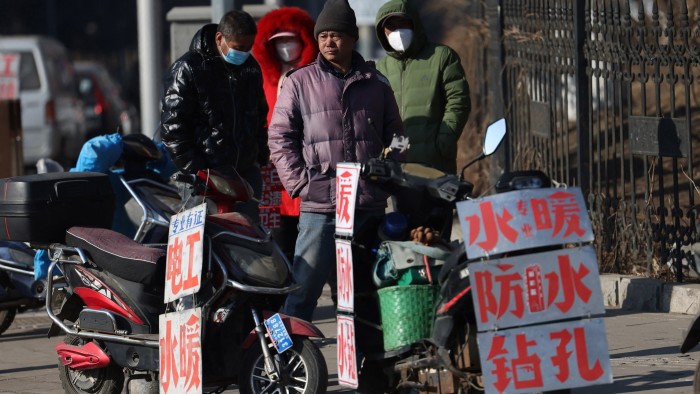When Xu Zaoxia moved to Shanghai from southern China in the early 2000s to work in a hospital, she was struck by the poor living conditions of her fellow migrants, the workers powering the country’s economic transformation.
They typically lived in qun ju or “group accommodation” and often lacked living space that was both affordable and legal. Forty people might be crammed into a 140 square metre flat, with nowhere to go if they were evicted.
“In a first-tier city there are so many delivery workers, so many waiters, so many baristas, [and] they didn’t have anywhere to live,” said the nurse-turned-property entrepreneur. “So I entered this line of work.”
Two decades later, through her company Anxin, Xu runs 170 projects across China, providing dormitory homes for an estimated 150,000 migrants. Anxin, which launched in 2014 and is backed by Carlyle and Proprium Capital Partners, has benefited from a push by China’s biggest cities to attract more migrant workers at a time of growing competition for labour.
The project is an example of how China’s vast property market still offers pockets of growth for real estate businesses even as a nationwide slowdown enters its fourth year. Home prices have fallen but, in the biggest cities, they remain unaffordable for the migrants who move to urban areas in pursuit of higher wages.
“China’s affordable renting is just getting started,” Xu said, speaking in Shanghai at one of her sites, which has been converted from a quarantine centre established in 2022 as part of the country’s zero-Covid policy.

Xu’s company, which has revenues of Rmb500mn ($69mn) a year, often operates sites on behalf of government partners, which together with employers can subsidise rent.
The Shanghai government set a target to provide affordable housing to 30,000 migrant workers by the end of last year, according to state media reports.
The city’s housing association in August said it was on course to reach that, citing 25 sites with rents priced between Rmb500 and Rmb1000 a month per person in four-people-to-a-room arrangements. Local laws require at least 5 square metres per person.
Attempts to woo more migrant workers with offers of subsidised housing come amid major demographic change in China, where the population declined for a third consecutive year in 2024.
It also reflects a shift in attitudes to migrant workers from rural areas, who numbered almost 300mn in 2023, according to official statistics, and often lack hukou residence permits in the cities where they reside, limiting their access to public services. Some migrants also come from other urban areas.
This evolution is especially pronounced in big cities such as Shanghai, said Weiping Wu, a professor at Columbia University and specialist in Chinese urbanisation.
“In another 10 years or so there will be a huge shortage among the local population [of] working age people,” she said. “Migrants are going to be even more critical.”
In the past, efforts were made to attract “foreigners” or “high-end talents” to Shanghai rather than migrants, Xu said. “The government has gradually noticed the importance of ‘outsiders’ to the development of a city,” she said, using a Chinese term that typically refers to those without an urban hukou in a given city.
At Xu’s properties, rents are often paid directly by employers, such as Meituan, the delivery app. Anxin “helps businesses resolve the problem of workers in first-tier cities, and also solves a social problem,” she said, given that previous conditions could foster “resentment”.
“Many businesses don’t have housing so what can they do? Our emergence resolved the government’s problem, the business’s problem of hiring, and it resolved the problem of workers’ high living costs in this city.”
Columbia’s Wu pointed to a long tradition of employer help for accommodation in China. “A lot of these companies are willing to pay for housing so they can have a somewhat stable workforce,” she said. “It’s hard now to find to some extent people who can do these manual jobs . . . because the locals are not willing to do [them].”
Inside one of the 11 tower blocks at the former quarantine site project, images of firefighters, nurses and delivery drivers line the corridors. One 45 square metre room, with two bunk beds, hosts four people, each of whom will pay about Rmb520 a month.
Average private rents in Jiading, the same district, are Rmb56 per square metre, according to EJ Real Estate R&D Institute.
In the canteen at Jing Xin, one 19-year old employee of the Shanghai subway is eating an early lunch. He has migrated from Zunyi, in the central province of Guizhou, and lives in a separate dormitory nearby but is visiting a friend. The rent at his dormitory is also paid by his employer, he said.
Meanwhile, Xu expects to open more sites. In terms of China’s urbanisation, she estimates, “there are still tens of millions of people who will move”.
https://www.ft.com/content/47b4e2af-e1f9-442c-b811-937446231602


